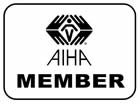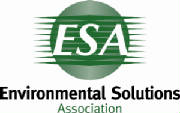
| Home | About Us | Services | Contact Us | FAQ |
|
Welcome to Mold Testing Charleston 800-386-MOLD (6653)
Serving Charleston and it's Suburbs... When should you have a Mold Inspector test for mold in your home? Mold Testing should be done if you want to determine if mold is growing in your home. Mold Testing should be done after any flooding or water damage event. Mold Testing should be done whenever you find a leak that has been present for more than 24 hours. Mold Testing should be done whenever you smell a moldy odor. Mold Testing should be done if residents of your home experience a long-term medical condition without a known cause. Mold Testing should be done if unusual stains appear on furniture or building material. Mold Testing should be done if you suspect mold but do not see any visible mold growth. Tweets by @ISCT18003866653 |
|
|
|
Why Test for Mold?
There are many valid and valuable reasons to perform mold testing. Here are 10 reasons... BCAM® infrared camera
One of the latest tools Mold Inspectors and Environmental Consultants can use to detect mold "hot spots" in places that cannot be seen easily is the BCAM® infrared camera. This kind of equipment and technology offers the mold inspector a non-invasive means of monitoring and diagnosing the conditions of buildings - providing immediate high-resolution thermal imagery, revealing potential structural and moisture issues, energy efficiency and even rodent or pest discovery. The BCAM® infrared camera features an automatic color alarm alerts yout to moisture-laden areas during building scans which can detect potential areas of mold growth, as well as verify when structures are moisture-free during the drying out process. With the BCAM® the Mold Inspector or Environmental Consultant can inspect places that can't be physically reached with moisture meters. The BCAM® reveals wet conditions behind surfaces such as: enameled walls and wallpaper that don't readily water stain, track leaks to their source, monitor the drying process, and confirm when a structure is dry. Indoor Air Quality (IAQ) deals with the content of interior air that could affect health and comfort of building occupants. The IAQ may be compromised by microbial contaminants (mold, bacteria), chemicals (such as carbon monoxide,radon), allergens, or any mass or energy stressor that can induce health effects. Often it is perceived that outdoor air is polluted, but indoor air is acceptable. Scientific studies illustrate the falsity of this perception, and, in fact, indoor air is often a greater health hazard than the corresponding outdoor setting. Techniques the inspector uses for analyzing IAQ include: testing of air samples, collection of samples from building surfaces. The testing samples are analyzed for mold, bacteria, chemicals or other stressors, depending on the test type. These investigations can lead to an understanding of the sources of the contaminants and ultimately to strategies for removal of the unwanted elements from the air. The Investigation Initial consultation Clients disclose why they would like a mold inspection. Usually they have seen mold, smell a musty odor, feel a high humidity in the home or have become ill at home or a combination of these. Visual Inspection Looking for visual mold, water stains, moisture intrusion. Recording humidity levels and temperatures from room to room. Checking suspect areas with a surface moisture meter to detect further moisture in wall cavities. Sampling The visual inspection and consultation will indicate which rooms need to be air sampled along with an outdoor control sample. If a surface area is suspect such as a carpet or piece of furniture then a swab or a physical sample can be taken. Reporting The report is written upon receiving the lab analysis. The lab results are interpreted in the report and visual findings are recorded. Recommendations are also included in the report. The lab results are legal documents and have individual identification numbers on them. Recommendations and Removal Any recommendations be done by a Certified Mold Inspector. Mold removal can be more dangerous than having dormant mold in a home. Negative air pressure machines, hepa filters, gloves and masks should be used. Final Air Sampling Air samples of the same rooms should be done after all moldy surfaces are cleaned or removed. Final air sampling will show mold levels decreased to an acceptable level in these rooms. Lab results from final air sampling is the proof you need to be assured that the infesting mold has been removed properly and completely. |
||
Copyright © 2011 ISCT. All Rights Reserved.




